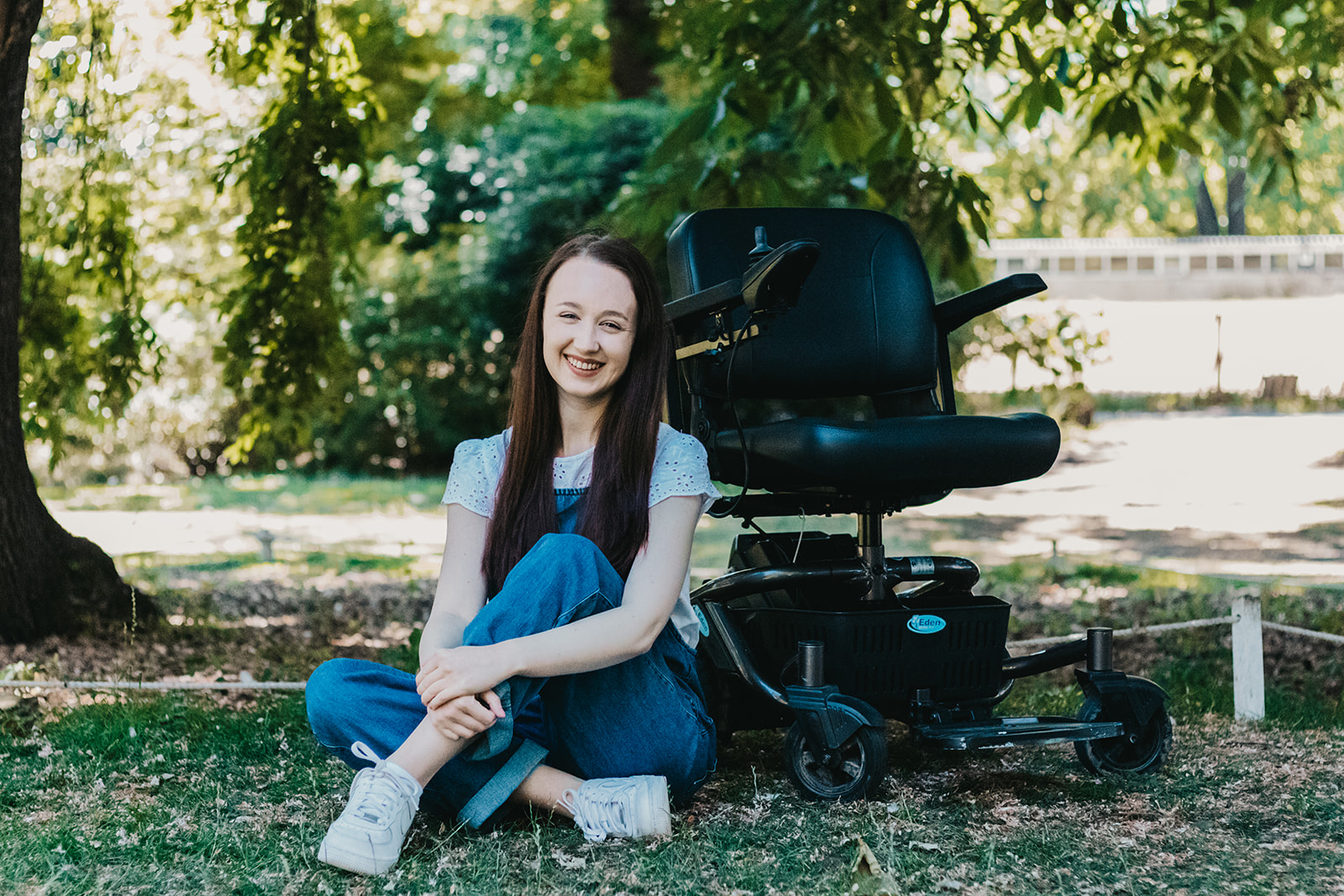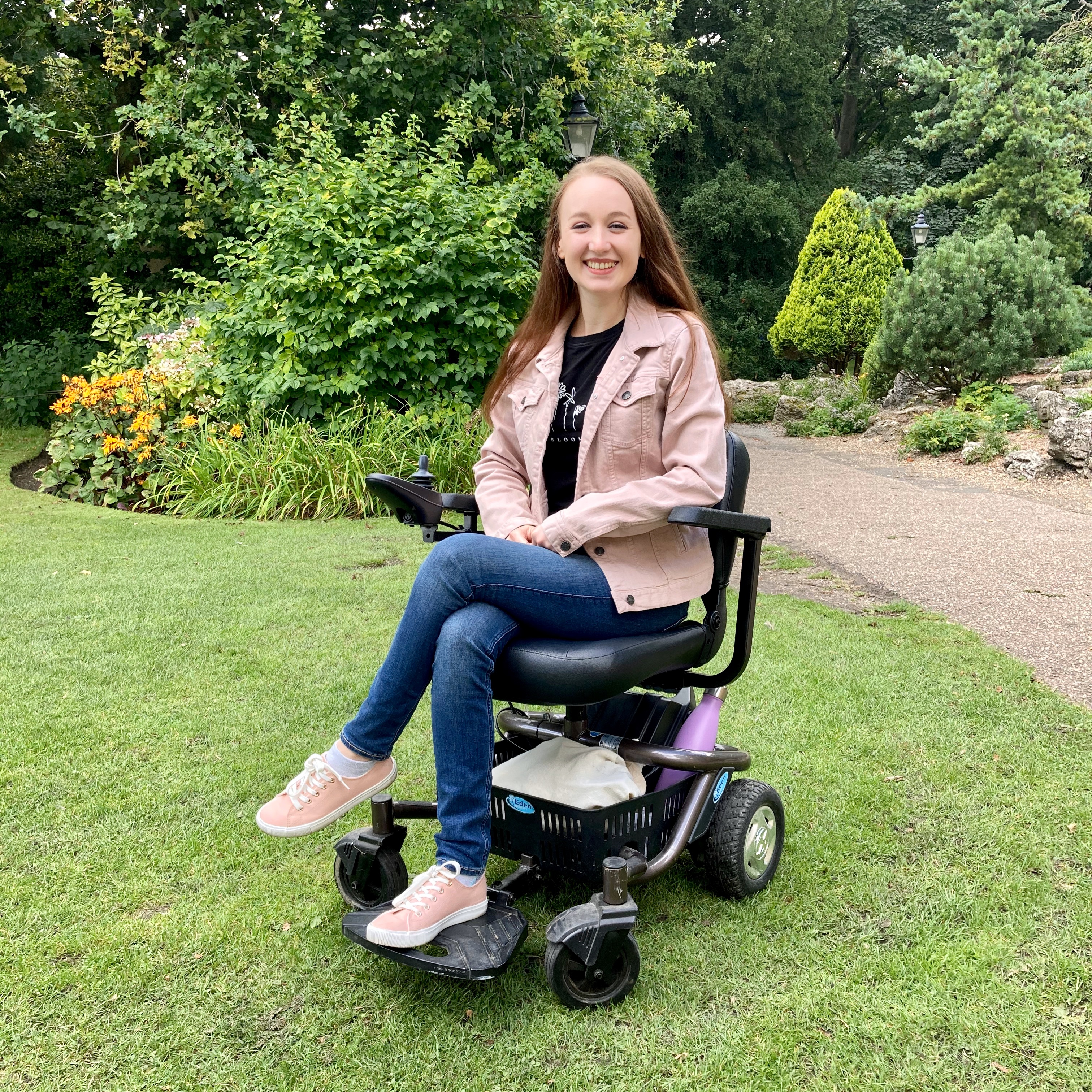ME Awareness Week: A Personal Story from Pippa
ME Awareness Day
Myalgic Encephalomyelitis (M.E.) is a long-term condition with a wide range of symptoms, the most common of which is extreme tiredness or fatigue that is not cured by resting or sleep.
M.E. can affect anyone, at any time in their life. Despite it being almost twice as common as Multiple Sclerosis in the UK, it is misunderstood and under-researched. We spoke to Pippa Stacey. blogger and disability activist with the condition to hear from her what it is like to live with the condition.

My name is Pippa Stacey, and I’m a disabled writer, blogger, and speaker. I’m based in Yorkshire, and have been living with M.E. for over a decade. I’m one of the lucky ones who has experienced improvement in my condition over the years, allowing me to work and leave the house, but the journey to reach this point was not an easy one.
I first began experiencing the symptoms of M.E. when I was a teenager, but it would be many years before I finally found the answers I was looking for. As a child, I was one of those typical, slightly annoying Type A personalities. I was always on the go and trying to be the best at everything, and alongside going to a ‘normal’ academic school I was training vocationally in classical ballet.
When I was around 14 or 15 years old, it was as though my body stopped listening. It could no longer do what I asked of it, and the consequences spanned far outside of the ballet studio. I was struggling to do everyday tasks I once did routinely; the harder I tried to push through, the less I was able to do them the next time.
I visited my GP many times over this period, but their response was always the same. My blood tests were coming back clear, so there was nothing to worry about. I tried to describe how weak and exhausted I constantly felt, how I could no longer concentrate or untangle my thoughts, how loud noises or bright lights made me feel like my head was being split open, how every limb felt like it was being pulled downwards by heavy weights and nothing I did seemed to make it better. Each time I turned up to an appointment it had all gotten slightly worse, but I would always be told that it was probably teenage hormones, or stress over exams, or maybe something a course of iron supplements would fix. Spoiler alert – it wasn’t.
It was only after a severe relapse at the age of 19 that I was finally taken seriously. By this point I could barely stand up unaided and had to spend most of each day in bed. It was impossible for even the most uneducated practitioner to ignore. I was referred to a specialist, and promptly diagnosed with M.E. It’s hard to pinpoint the exact cause, but undiagnosed glandular fever around the same time as the onset of my symptoms seems to be a vital piece of the puzzle.
Although M.E. is still woefully under-researched and there is no targeted treatment or a cure, I remember feeling relief just to have a name for what I was experiencing and finally realise that I wasn’t alone – in fact, there are over 260,000 people in the UK who also have this condition. M.E. affects everybody differently, in a range of severities. Those at the mildest end may be able to live their lives as they did before with just a few adjustments, while those at the most severe end can lose the ability to eat, breathe, and communicate independently. Through sharing my own story I’m always keen to express ways to make the most of life alongside a disabling chronic illness, but it’s always important to acknowledge that my struggles don’t even come close to representing those of people with Severe ME.
Even though I’ve fortunately experienced improvement, I still experience dozens of symptoms on a daily basis. Over the past few years, we’ve seen the world begin to better recognise chronic pain and fatigue, but the one symptom that people seem to least understand, and yet the one that disables me most today, is Post-Exertional Malaise (PEM).
PEM refers to a worsening of a person’s symptoms after a period of activity. Those of us with chronic illness all have a baseline we must live within the confines of, and if we over-exert ourselves at any given moment or forget to pace our activities, the PEM sets in. It doesn’t kick in immediately like everyday tiredness might. Instead, it tends to grasp hold of you 24-72 hours after the sustained activity has taken place. It’s hard to put into words how horrendous PEM is. For me, it feels like somebody has pricked poison into the soles of my feet and is slowly seeping through my body, burning up each muscle and organ along the way.
These days, most of my condition management centres around pacing myself and managing my activity, to avoid the dreaded PEM as much as possible. For anybody newly diagnosed with M.E, this is my top recommendation; learn about pacing, and make it your way of life. Give your body the rest and compassion it’s craving, and it will thank you.
For me, an important part of looking after myself while managing M.E. is making the most of mobility aids and adaptive equipment. Using a wheelchair has changed my quality of life for the better, but the term mobility aids includes far more than walking aids alone. My other holy grail products that make life a little easier include shower stools, lightweight cooking and cleaning products, thermal clothing, a profiling bed, and the biggie… noise-cancelling headphones. Noise-cancelling headphones are an absolute game-changer.

The world has a long way to go to become truly inclusive for people with M.E., and we still face many social barriers as well as medical ones, but we seem to be on the cusp of a crucial turning point. Advocate for change where you can, but don’t be afraid to spend time and valuable energy on making your everyday life more comfortable and enjoyable too. You deserve it!
We hope that you have found this article informative and helpful.
If you wish to find out any more about the types of products Pippa has mentioned please click on the bold and underlined text, or take a look at some of the product categories listed below.
- Powered Wheelchairs
- Shower and Bath Boards, Seats and Stools
- Food Preparation Utensils
- Thermal Clothing
- Profiling Beds
If you are looking for more support or advice on living with M.E, please take a look at the links below.
This article was written for Living Made Easy by Pippa Stacey.
Pippa Stacey is a writer, speaker, and communication consultant from Yorkshire. She blogs about life with chronic illness at Life Of Pippa and on Instagram at @lifeofpippa, and for the past two years has been named one of the most influential disabled people in the UK. She also works in the charity sector, and has a particular interest in inclusive education and employment for people with Energy Limiting Conditions, and her debut non-fiction book, University And Chronic Illness: A Survival Guide was published in 2020. In her free time, Pippa enjoys theatre and books, and can usually be found in novelty pyjamas with a cup of tea in hand.